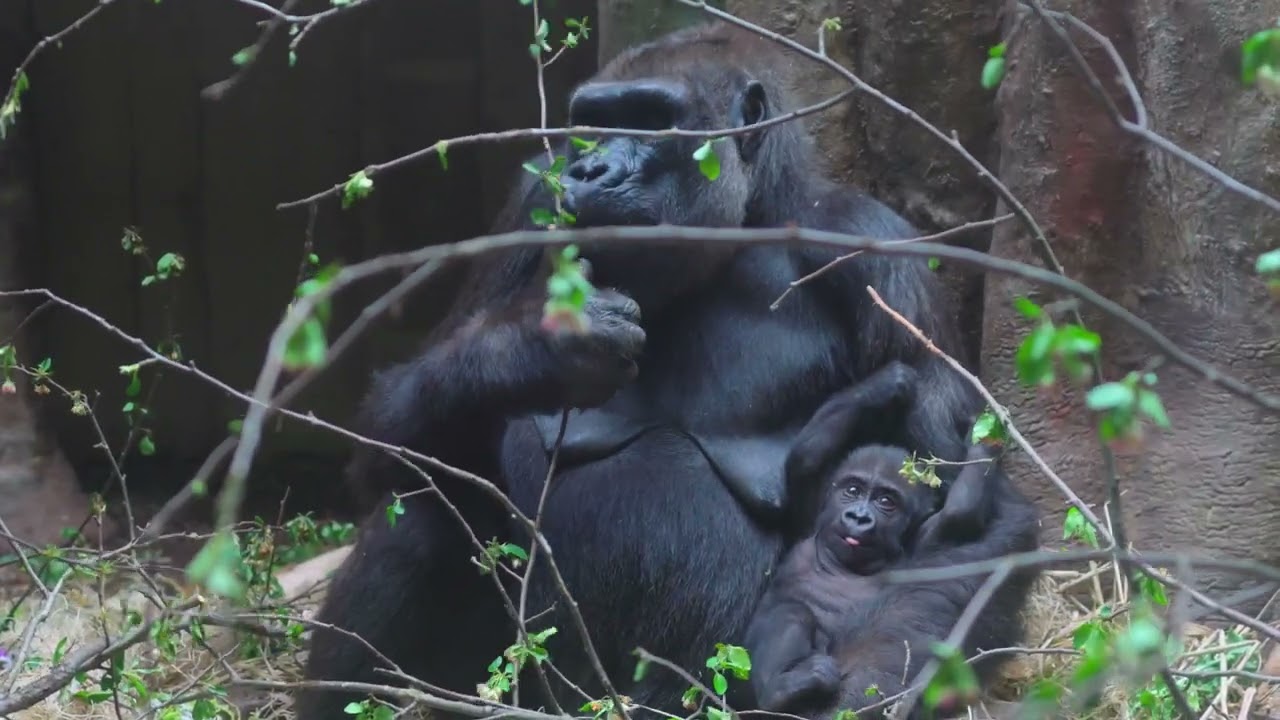– Insights into gorilla troops’ social structure and dynamics in both wild and controlled environments.
– The role of zoos in wildlife conservation and the importance of carefully managed gorilla reunions.
– Recent advancements in our understanding of gorilla behavior and communication through observational studies.
– Challenges faced in gorilla conservation and the impact of habitat destruction on their natural populations.
– Strategies employed by conservationists to promote sustainable coexistence between humans and gorillas.
Gorillas, the largest of the living primates, have captivated the attention of scientists, conservationists, and the public with their profound intelligence and complex social behaviors. These majestic creatures, native to the forests of central Africa, live in groups known as troops. A gorilla troop typically comprises one dominant silverback, several adult females, and their offspring. This social structure plays a crucial role in the species’ survival, providing protection, socialization opportunities, and a framework for learning and transmitting behaviors.
Zoos across the globe play a pivotal role in the conservation of gorillas, offering a last bastion for some of the most endangered subspecies. Creating and maintaining meticulously designed habitats that mirror their natural ecosystems are vital for the physical and psychological well-being of gorillas in captivity. Moreover, gorilla troops reunite in zoological settings, offering unique insights into their social behaviors and reinforcing the bonds essential for their cohesion and stability. These reunions require extensive planning and observation by zookeepers and conservationists to mimic the natural processes as closely as possible, ensuring the safety and well-being of these sentient beings.
Recent studies and observational research have significantly advanced our understanding of gorilla behavior and communication. Gorillas utilize a diverse range of vocalizations, body postures, and facial expressions to communicate with one another, a complex and nuanced system. These communicative behaviors are crucial during reunions, as they allow gorillas to express intentions and emotions and reconcile after separations. Scientists have documented the rich emotional lives of these primates, highlighting the importance of social bonds and the impact of group dynamics on individual welfare.
Despite the fascination they inspire and the efforts dedicated to their preservation, gorillas face numerous threats in the wild, primarily from habitat destruction and poaching. The conversion of forest land to agricultural use, mining, and civil unrest has resulted in significant loss of their natural habitat, pushing these great apes to the brink of extinction. The situation underscores the importance of conservation initiatives to protect their remaining habitats and foster a harmonious relationship between gorillas and the communities that share their environment.
Conservation strategies have evolved to include community-based approaches that benefit humans and gorillas. Education and awareness campaigns focus on the importance of gorillas to the ecosystem and the ethical imperative of their conservation. Sustainable practices, such as ecotourism, offer economic alternatives to communities, reducing reliance on activities that harm gorilla populations. Additionally, reforestation projects and anti-poaching patrols are critical in ensuring the survival of gorillas in their natural habitats.
Gorilla troops’ reunites illuminate the complex emotional and social lives of these remarkable animals and inspire a greater commitment to their conservation. By fostering a deeper understanding of gorillas and addressing their challenges, we can support efforts to ensure their survival and the preservation of biodiversity in our planet’s fragile ecosystems. Through diligent observation, research, and compassionate conservation practices, the future for gorillas can be hopeful, marked by thriving populations both in the wild and in the care of humans.
*****
Source Description
Baby Jameela and the troop come together as we talk to Dr. Elena Less about the group dynamic and how big brother Kayembe has taken to his new role.


